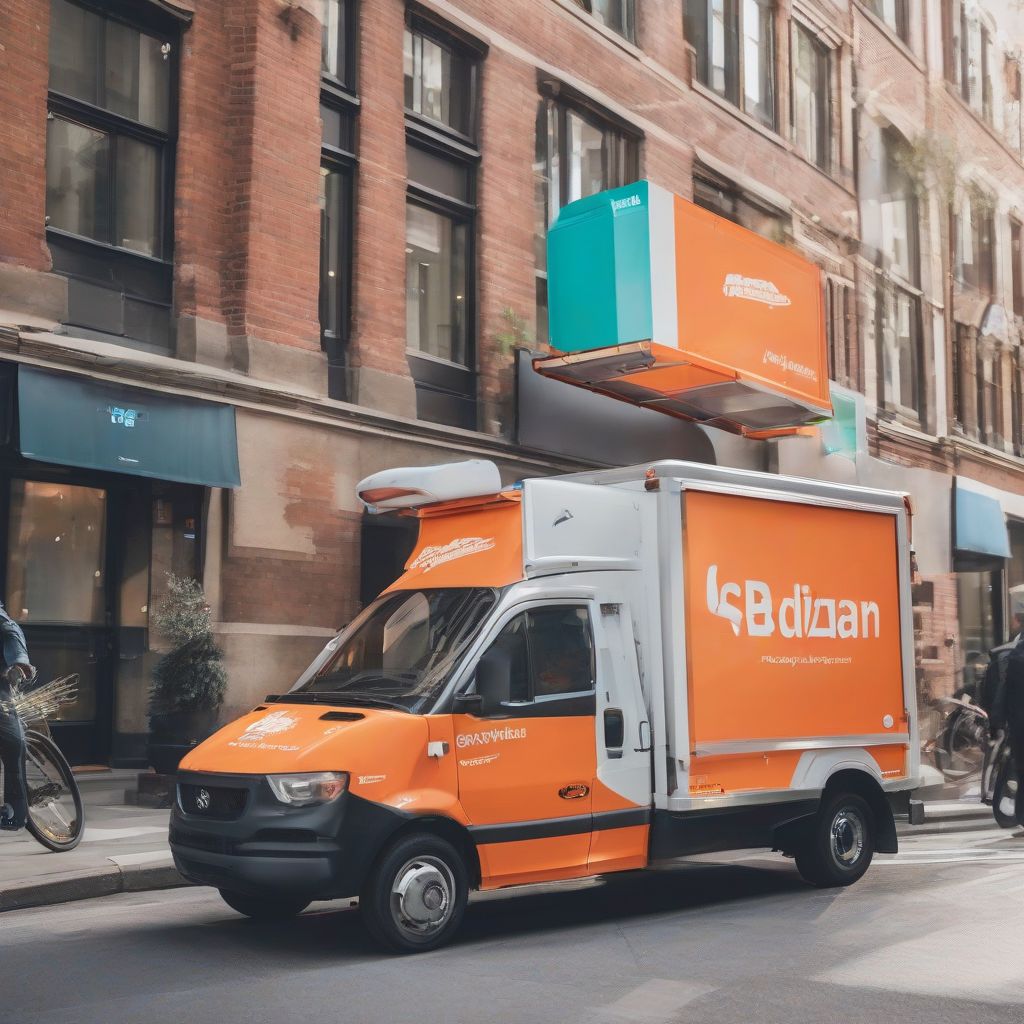In today’s fast-paced world, convenience is king. Customers crave instant gratification, and that extends to how they receive their purchases. For small businesses, this means integrating a reliable and efficient delivery service is no longer optional – it’s essential. But navigating the world of “Small Business Delivery Services” can feel overwhelming. What are the options? How do you choose the right one? What about costs? This guide will address these questions and more, providing you with the knowledge to optimize your delivery strategy and propel your business forward.
Understanding the Landscape: What is a Small Business Delivery Service?
services.amthanhapu.com/wp-content/uploads/2024/07/delivery-truck-small-business-66a06f.jpg" alt="Delivery Truck for Small Business" width="1024" height="1024">Delivery Truck for Small Business
At its core, a small business delivery service acts as the bridge between your products and your customers. It encompasses everything from order pickup to transportation and final drop-off. This can be handled in-house, with your own employees and vehicles, or outsourced to third-party providers specializing in logistics and delivery.
Why Delivery is a Game-Changer for Small Businesses
Meeting Customer Expectations & Boosting Sales
- Convenience Drives Purchases: In the age of online shopping, offering delivery caters to the modern consumer’s desire for ease and speed.
- Expanded Reach: Delivery services allow you to break free from geographical constraints and reach customers beyond your immediate area, potentially unlocking significant growth.
- Competitive Edge: In a crowded market, providing efficient delivery can be the differentiator that attracts customers and builds loyalty.
Operational Efficiency & Cost Savings
- Focus on Core Competencies: Outsourcing delivery allows you to focus on your core business functions, from product development to customer service, without the logistical headaches.
- Optimized Logistics: Third-party providers often have established networks and technologies that streamline routes and minimize delivery times, translating to potential cost savings.
- Scalability: As your business grows, delivery services can easily adapt to handle increased order volume, ensuring you can meet demand without compromising quality.
Choosing the Right Delivery Solution: Key Considerations
1. Delivery Area & Reach
- Local Deliveries: Ideal for businesses operating within a limited geographic area, often relying on in-house staff or local courier services.
- Regional Deliveries: Cover a wider area, typically requiring partnerships with regional carriers or specialized delivery providers.
- National Deliveries: Essential for businesses with a nationwide customer base, necessitating collaboration with major shipping carriers.
2. Delivery Speed & Options
- Same-Day Delivery: Offers instant gratification for time-sensitive orders, but often comes at a premium cost.
- Next-Day Delivery: A popular choice for customers seeking fast and reliable service without the urgency of same-day delivery.
- Standard Delivery: The most cost-effective option, typically involving delivery within a specified timeframe, usually a few business days.
3. Cost Structure & Affordability
- Flat Rate: A fixed delivery fee, regardless of order size or distance, offering transparency and ease of calculation.
- Weight-Based Pricing: Charges are determined by the weight of the package, suitable for businesses with varying product sizes.
- Distance-Based Pricing: Fees are calculated based on the distance between pickup and delivery locations, ideal for regional or national deliveries.
Navigating the Future: Trends Shaping Small Business Delivery
- Sustainability: Customers are increasingly eco-conscious, making sustainable delivery options, such as electric vehicles and optimized routes, a crucial consideration.
- Technology Integration: From route optimization software to real-time tracking apps, technology is streamlining delivery operations and enhancing transparency for both businesses and customers.
- Personalization: Customized delivery experiences, such as specific delivery windows and personalized communication, are gaining traction, fostering stronger customer relationships.
Conclusion: Delivering Growth & Success
Implementing a robust delivery strategy is no longer a luxury for small businesses – it’s a necessity. By understanding the options available, carefully evaluating your needs, and embracing innovation, you can leverage delivery services to optimize your operations, enhance customer satisfaction, and unlock new avenues for growth. As the world embraces the convenience of on-demand delivery, ensure your small business is well-positioned to capitalize on this evolving landscape and drive success in today’s competitive market.
